VIDEO ART
A selection of video art works to highlight the aesthetics and meaning of the artist's research. Each video features the body in action. They are performances that through action investigate and give form to equal feelings: abandonment, pain, love in search of a transformation of the soul and spirit. The videos are carnal prayers, personal rituals to activate a process of catharsis and knowledge.
Le tecniche utilizzate riflettono sul tempo e l'”Io” : slow motion, reverse time, datamoshing, freeze. I video sono videotape nativi (VHS) digitalizzati, video mixati con un videomixer degli anni ’90 (Roland V8) e in 4k. Quando presente il testo e la colonna sonora sono interamente creati dall’artista. Le parole si inspirano alla filsofia esistenzialista e alla relIgione. La musica è composta con un sintetizzatore e con un kaos oscillator. L’ aspetto del colore e della luce sono particolarmente curati in senso pittorico per comunicare con il simbolo gli stati d’animo.
KAIROS | SELF-PORTRAIT
VIDEOTAPE VHS | COLOR | SOUND | 2:30 sec. | 2024
Original text and music M. Balbi Dipalma
Winner of the Etereart 'Visions - International Art Prize 2024' | Salerno
Finalist 'Modigliani Prize 2024' installation category | Rome
Contemporary artist Marco Balbi Dipalma explores the essence of his being and existence through one of the most powerful and immediate means of expression: video art. It allows him to capture the complexity of feelings and emotions, offering the viewer a window into his inner world. In the video performance, the artist records in real time all the movements produced by the body during a long wait. Throughout the duration of the video, the phrase "my time is time for abandonment" is continuously repeated, thus becoming a hypnotic mantra.
The repetition invites the viewer to reflect on his or her own essence, the concept of time, knowledge and spirituality, and the fusion of sound and words make the work an intellectual experience. Another important element is the use of the colour red, which is present both in the jacket and on the floor, and is the symbol of spiritual and carnal contemplation. The performance is not just a visual representation but an emotional journey that expands the understanding of the self and the world.
From the Catalogue "International Art Prize Visions"
MARIANGELA BAGNOLO | CURATOR
DE PROFUNDIS | AFFRESCO | TRIPTYCH
VIDEO DIGITISED FROM VHS | 16:9 | FEEDBACK LOOP | SOUND | COLOUR | 2024
Original text M. Balbi Dipalma
PARATISSIMA' selection 2024
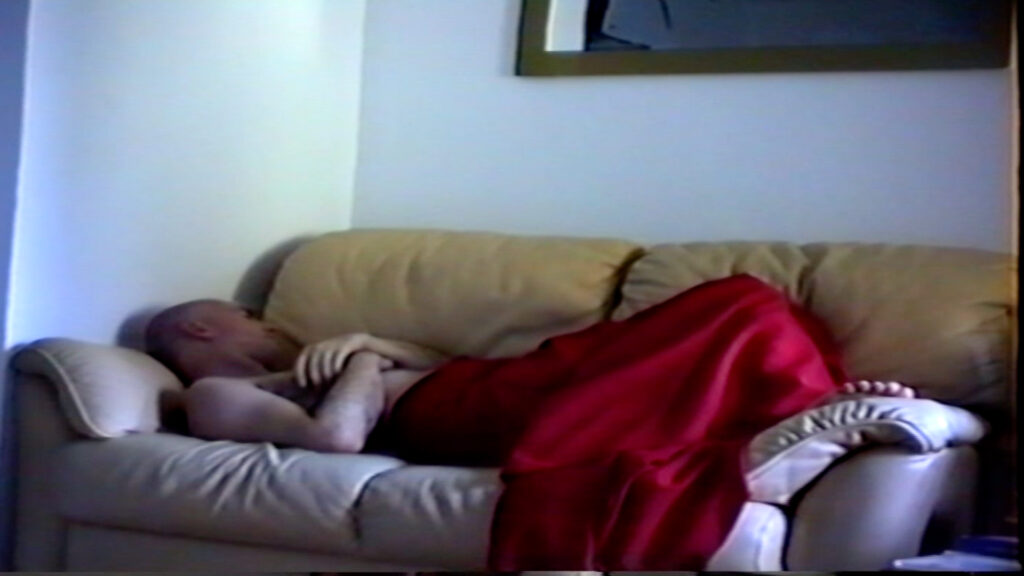
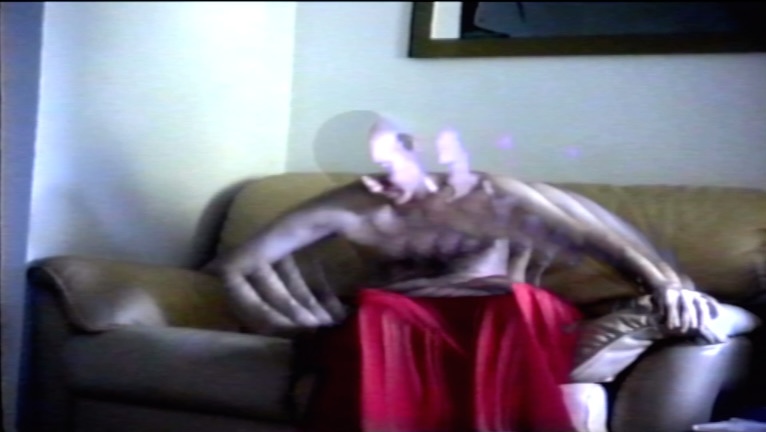
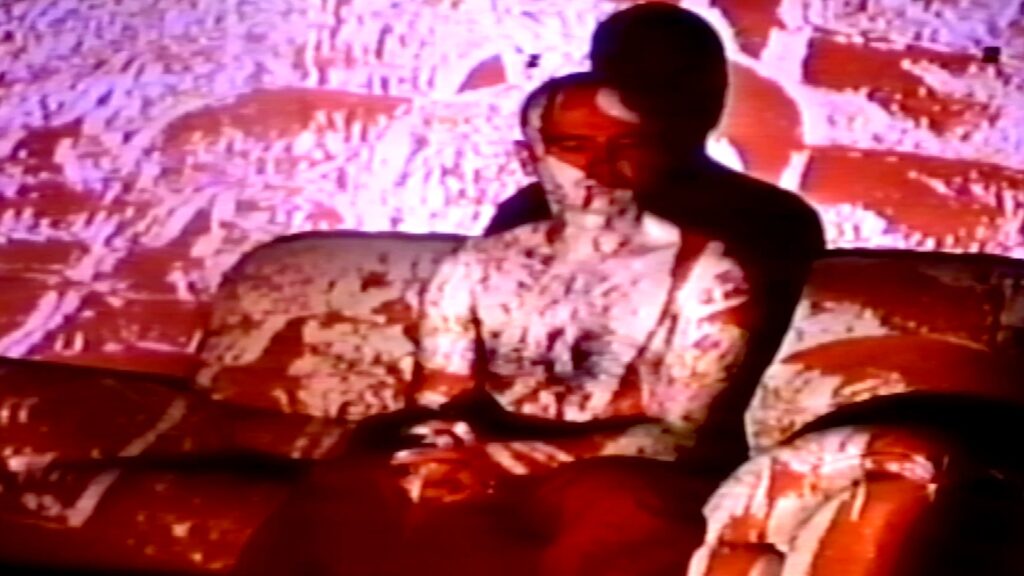
Part. I | Part. II | Part. III
Through a video installation, Marco Balbi Dipalma interrogates the essence of abandonment. The term and concept that Balbi Dipalma analyses possesses a dual value, since it belongs to the sphere of solitude - sought independently or achieved due to social estrangement - but also in the sphere of faith, in which the utmost value of the ideal of abandonment towards what cannot be seen is enshrined. This concept underlies the artist's work, which is poetic, hypnotic, in which horror vacui is provided with a voice that materialises through the artist himself.
From the catalogue 'Like the skin that hides me' Paratissima" 2024
M. BRONZINO | CURATOR
RITUAL SONGS
4K | 16:9 | COLOUR | MUTE | LOOP | REAR PROJECTION ON CANVAS OR WALL OR 4K LCD TV | 2022/23
COLLECTIONS OF 7 VIDEOS: TRASFIGURAZIONE, COMPIANTO, AGONIA, PIETA’, DERISIONE, ASCENSIONE, RESURREZIONE
Trasfigurazione selected "Biennale d'arte di Sondrio".
RITUAL SONGS are a collection of videos that question suffering and self-love in relation to the divine as (using) carnal prayers. They are a visual prayer, like the sacred paintings of 13th century Italy.The videos investigate universal pain.
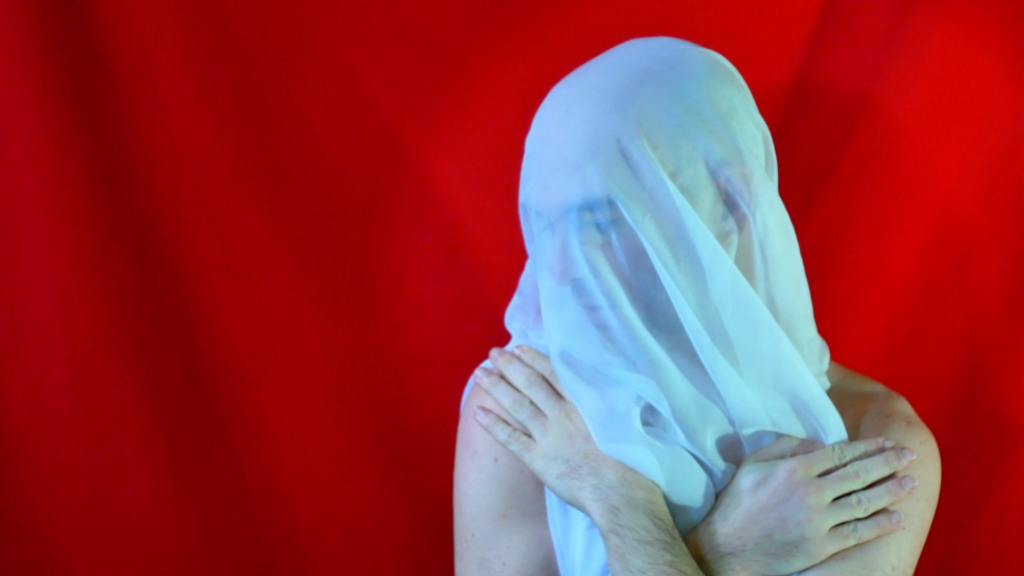
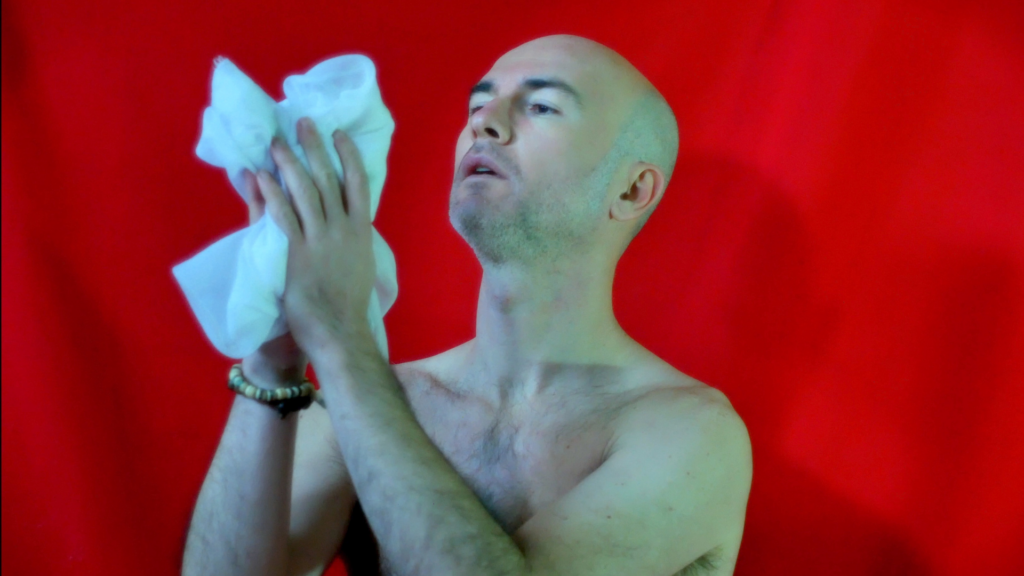

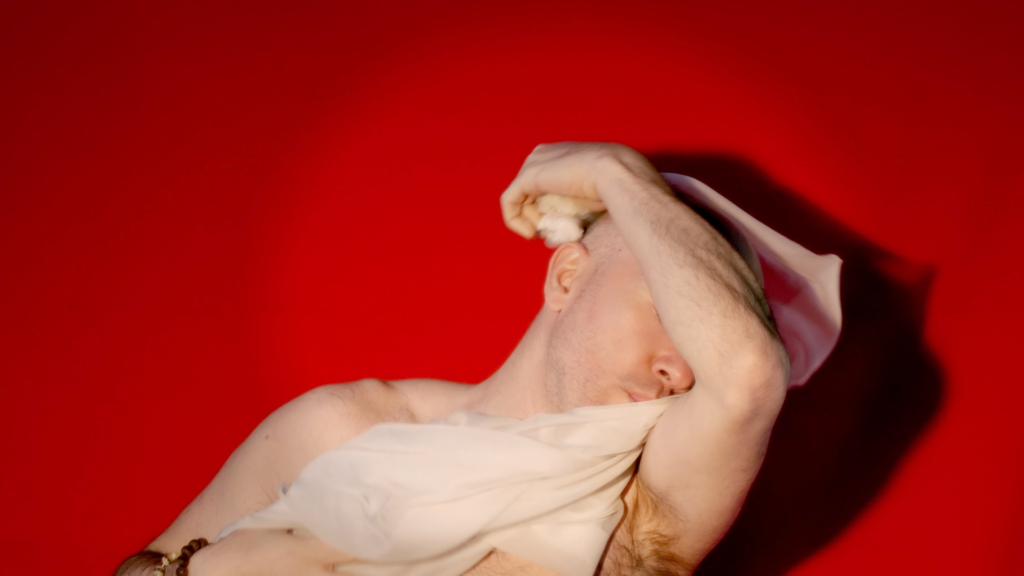
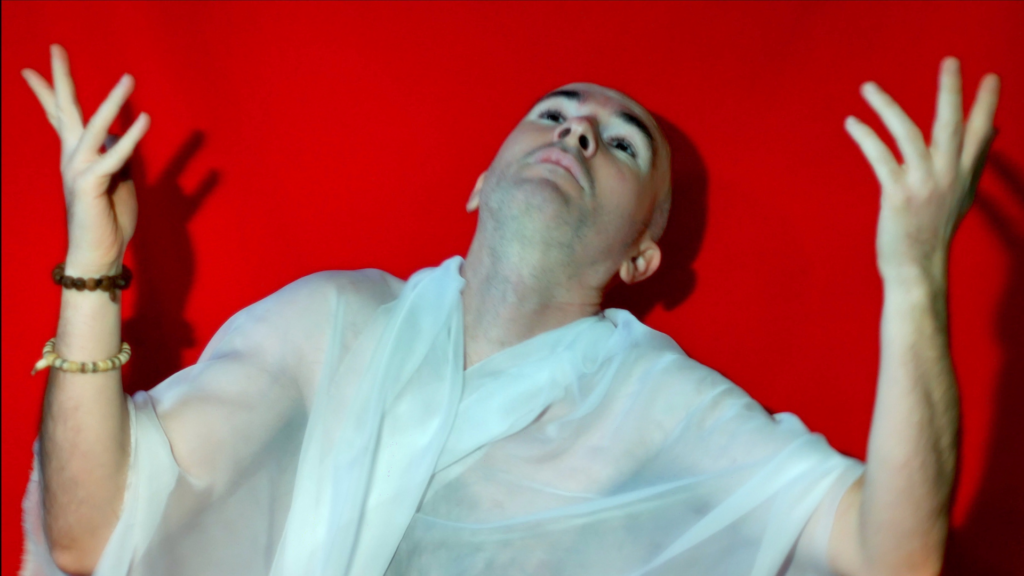
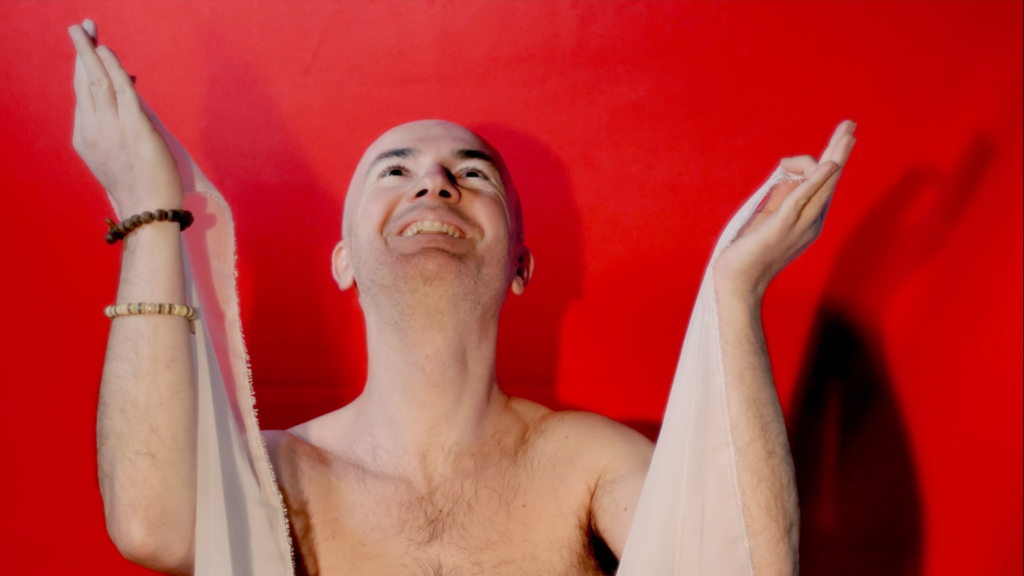
Compianto | Agonia | Derisione | Pietà | Ascensione | Resurrezione
The use of dark colours and shadows creates an intimate and claustrophobic atmosphere, amplifying the protagonist's sense of anguish. The soft light, however, offers a significant contrast: it becomes a symbol of a latent hope, a possibility of illumination that, although distant, remains present. The contrast between light and shadow is not only visual, but conceptual. Dipalma invites the viewer to reflect on the uncertainty that accompanies every process of transformation: where is the sun, the source of light and life? This silent question runs through the entire work, suggesting that the journey towards a new identity is often obscure and uncertain. Several interesting symbolisms can be found within the work. Firstly, the cloth that envelops the protagonist is a polyvalent symbol. It protects, but at the same time separates; it conceals, but does not erase man's vulnerability. It is an image that recalls the human condition, suspended between the need for protection and the desire for expression. Moreover, the final fading of the body into the cross-like position suggests a spiritual and universal dimension. It is not a simple sacrifice, but a search for redemption and meaning, an opening to a possible rebirth. Finally, the work represents transfiguration not only as loss, but also as possibility. Tearing oneself does not mean annihilation, but opening up to a new form, to a new vision of oneself. The rhythm of the video is constructed in such a way as to suggest an upward movement, a progressive detachment from despair towards a higher dimension of awareness. This movement is not linear, but full of uncertainties and regressions, reflecting the complexity of the inner journey. The final fade-out, in which the ego eclipses behind a veil, closes the work with a powerful image: an identity that does not disappear, but is transformed, leaving space for a deeper and more authentic presence. Marco Balbi Dipalma demonstrates an extraordinary ability to combine the visual language of the Renaissance with contemporary digital techniques, creating a work that is both anchored in tradition and profoundly relevant today. The use of video as a medium allows Dipalma to add movement and temporality to a static theme such as transfiguration, transforming it into a dynamic and engaging process. This choice amplifies the involvement of the spectator, who finds himself immersed in an all-encompassing visual and emotional experience. "Trasfigurazione" by Marco Balbi Dipalma is a work that transcends mere visual representation to become a sensory and conceptual experience that invites the viewer to confront the complexity of human identity. Through the use of powerful symbols, sombre colours, soft lighting and an ascending rhythm, Dipalma explores the conflict between loss and transformation, between mourning and rebirth. This 'visual prayer' stands out as a significant contribution to the contemporary digital art scene, offering a universal reflection on the experience of change and the possibility of finding meaning in the darkness.
ART CRITICISM SONDRIO BIENNIAL 2024
PATHOS
DIGITIZED VHS VIDEOTAPE | 4:3 | VIDEO SYNTHESISER | ACTION PAITNIG | SOUND | COLOUR | 1:28 sec.| 2025
Original text and music M. Balbi Dipalma
“To you who suffer as I have suffered,
do not forget suffering
when you see the being suffering
love and breathe."
The video is a carnal prayer. The work takes shape from an autobiographical epserience of suffering and love. The action of standing up in slow motion, does not only imply recovering from a situation of pain, but the axiality of the human being in the search for a pure love that can purify suffering. In this search for verticality, standing takes on an existential sense of finding one's place in the world. As expressed by Heidegger, Being implies l'Esserci. The Greek and then Christian concept of pathos, is thus investigated as the capacity for total participation of being with Being, in an ascent of axial discovery of primary love.
SELF-PORTRAIT IN THE MIRROR: PRIMARY LOVE
VIDEO 4k 9:16 | DATAMOSHING | SILENCE | COLOUR | PROJECTION ON CANVAS, WALL, LCD MONITOR 9:16 | 2:07 sec. | 2023
“Love loves and in loving always looks a little beyond what it has and possesses in its hands' M. Schaler 'Ordo amoris'
"Self-Portrait in the Mirror: Primary Love". investigates the heart as the dynamic affective centre of identity in order to open a metaphysical space, in search of an "ordo amoris", which gives meaning to the existential void and ethical value. With the symbolic action of opening one's Indian dress and touching one's chest with closed eyes in front of the mirror, the performer searches within himself, starting from his own body, for an axiological structure of love, in the discovery of an authentic vision of his own "I". The 'I' is reflected in the body as in a mirror. The reflected body connotes itself as ens amans, which seeks to understand the logic of the heart in order to recognise the intimate constitution of its being. The datamoshing technique emphasises the act of touching and penetrating the heart centre to advance the reflected identity in its beauty, building it up as a world of values of Love. In the act of loving, identity is stripped bare and seeks a deeper, ontological fulfilment in Being. The self-portrait in the mirror investigates with the eye of the heart the ethos and culture of Love: the self that opens up to the you, towards a primary love.